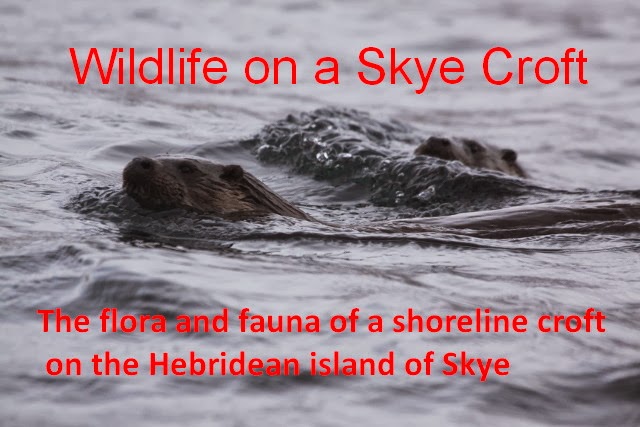There is no sign of the otter family. I surveyed otter sprainting sites from a point west of the beach by Loch Ainort, the furthest west that I had seen them, to beyond the Ard Dorch grazings boundary on Loch na Cairidh, a distance of almost 1.6km. I found 32 spraint sites and 4, maybe 5, holts. Very few of the spraints were recent (within the last week or so) which seems to suggest that the family has moved on to somewhere perhaps with better availability of food. Kruuk (Otters: Ecology Behaviour and Conservation, 2006) suggests that the diet of otters changes with the seasons and that they do move from more exposed to more sheltered coasts in the summer, from his observations in Shetland. I hope this is an explanation rather than that one or more of the otters met with an accident on the road for example.
I put the moth trap out on two nights collecting 14, and 13 moths respectively. There were only 3 species, whereas Brian Neath in Lochaber caught 10 species and many more moths on the same nights. Brian confirmed my identifications. I can only attribute the paucity of species to the delayed progress of spring.
.JPG) |
| Hebrew Character |
.JPG) |
| Clouded Drab |
.JPG) |
| Red Chestnut |
.JPG)
Indeed Spring is really late. Primroses are only just shyly coming into flower; we have records covering the last 7 years which show that this year the primroses are flowering later than during any of the previous 6 years, 18 days later than the average.
There were quite a few hoverflies settled on the lesser celandines, probably an insect for every 20 plants or so, but all the same species which I think is Melanostoma mellinum. This is very common in damp places and its distribution is widespread. I cannot find a common name for it.


+Crop.jpg)




